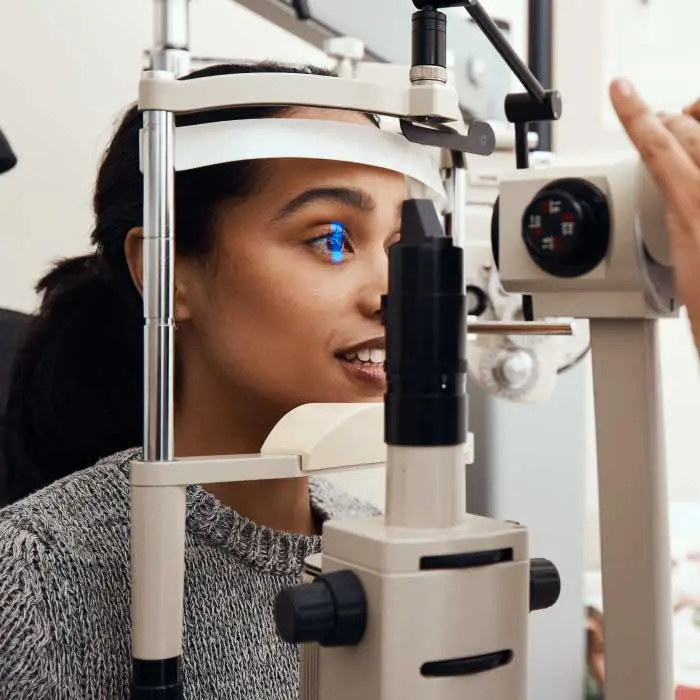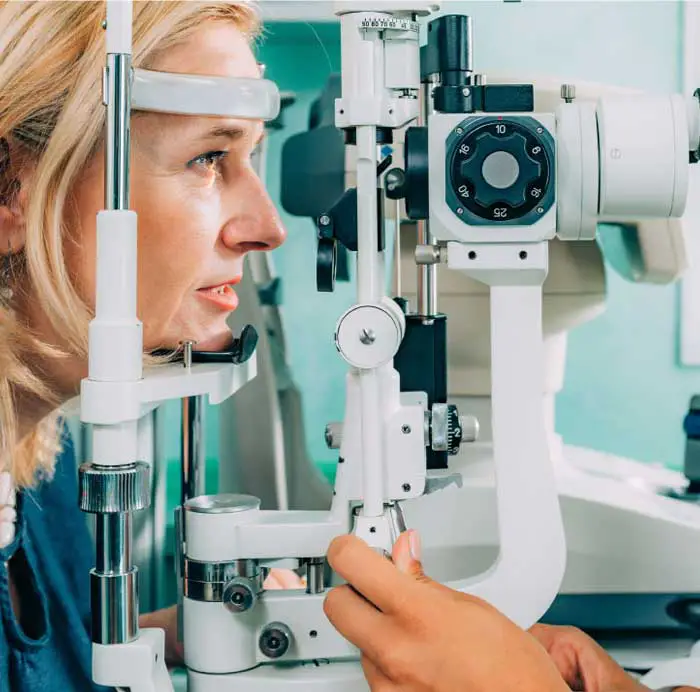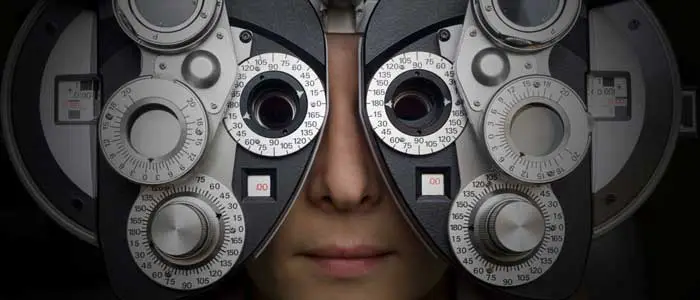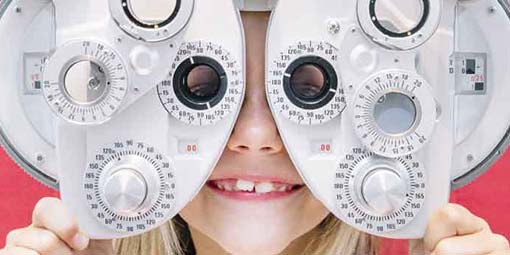Anisocoria - Symptoms, Causes and Treatment
07-04-2024
What is Anisocoria?
Anisocoria is a condition in which the pupils of the eyes are unequal in size. This discrepancy can be subtle or pronounced and can occur in one or both eyes. Anisocoria can be a normal variation in some individuals or may be a sign of an underlying medical issue. It is important to have any changes in pupil size evaluated by an eye care professional to determine the cause and appropriate management.What Are The Causes Of Anisocoria?
Anisocoria is typically caused by a difference in the size of the pupils, with one pupil being larger than the other. This can occur due to a variety of reasons, including nerve damage, eye trauma, certain medications, or underlying medical conditions such as Horner's syndrome or Adie's tonic pupil. In some cases, the exact cause of Anisocoria may be unknown. As an optometrist, it is important to conduct a thorough eye examination to determine the underlying cause of Anisocoria and provide appropriate treatment or management options for the patient.What Are The Risk Factors For Anisocoria?
There are several risk factors that can contribute to the development of Anisocoria. These include a history of head trauma or injury to the eye, certain medications that affect the muscles of the eye, underlying medical conditions such as Horner's syndrome or third nerve palsy, and certain neurological disorders. Additionally, individuals with a family history of Anisocoria may be at a higher risk of developing the condition. It is important for individuals with these risk factors to be aware of the potential for Anisocoria and to seek evaluation and treatment from an eye care professional if necessary.What Are The Symptoms Of Anisocoria?
Anisocoria is characterized by a noticeable difference in pupil size between the two eyes. Common symptoms associated with Anisocoria include unequal pupil sizes, blurred vision, double vision, sensitivity to light, eye pain, headaches, and difficulty focusing. In some cases, individuals with Anisocoria may also experience changes in the shape of their pupils or a drooping eyelid on one side. If you are experiencing any of these symptoms, it is important to seek evaluation and treatment from an eye care professional to determine the underlying cause of your condition.How is Anisocoria Diagnosed?
Anisocoria is diagnosed through a comprehensive eye examination by an optometrist. During the exam, the optometrist will carefully inspect the pupils of both eyes to determine if there is a noticeable difference in size. They may also use a penlight to assess how the pupils respond to light, as well as perform additional tests such as visual acuity testing and a slit lamp examination. In some cases, the optometrist may need to dilate the pupils using eye drops to get a better view of the internal structures of the eye. Overall, a thorough evaluation by an optometrist is essential in accurately diagnosing Anisocoria and determining the appropriate course of action.How is Anisocoria Treated?
Treatment for Anisocoria depends on the underlying cause of the condition. In some cases, no treatment may be needed if the condition does not cause any symptoms or affect vision. However, if Anisocoria is caused by a more serious underlying condition, such as a neurological issue or eye injury, treatment may be necessary. Treatment options may include addressing the underlying cause of Anisocoria, such as treating a brain tumor or eye infection, or using medication to help manage symptoms. In some cases, surgery may be needed to correct the issue causing Anisocoria. It is important to consult with an eye care professional to determine the best course of treatment for Anisocoria.Is There A Cure For Anisocoria?
There is no cure for Anisocoria, as it is typically a symptom of an underlying condition rather than a standalone condition itself. However, treatment options may be available to help manage the underlying cause of Anisocoria and alleviate associated symptoms. It is important to consult with an eye care professional to determine the best course of action for addressing Anisocoria and maintaining optimal eye health.How Can Anisocoria Be Prevented?
Anisocoria cannot be prevented, as it is typically a natural variation in pupil size that is not within our control. However, it is important to have regular eye exams to monitor any changes in pupil size and ensure that there are no underlying issues causing the asymmetry. Additionally, protecting the eyes from injury or trauma can help prevent any damage that may lead to anisocoria. Overall, maintaining good eye health through regular check-ups and taking precautions to avoid eye injuries can help promote overall eye wellness and potentially reduce the risk of developing anisocoria. Schedule An Appointment
Adult Eye Exams
Our advanced eye exams consist of 25+ modern tests and digital scans to assess eye health, function, and visual acuity.

Child Eye Exams
Give your child a clear future with an annual eye exam from our experienced Edmonton optometrists.

Senior Eye Exams
Maintain your vision through your golden years with gold standard eye care from the optometrists at our Edmonton eye clinic.

Contact Lens Eye Exams
Our eye exams for contact lens wearers include test and digital scans to assess eye health, function, visual acuity, and lens fit.

Diabetic Eye Exams
Managing diabetes requires regular eye exams to ensure that diabetes is not causing irreversible vision loss.

Dilated Eye Exams
Dilating the eyes enables our Edmonton optometrists to see more of the eye so that you many never see less.
Our Edmonton Eye Exams Are Comprised Of 4 Phases Of Evaluation

1. Eye Exam Pre-Testing
Corneal Thickness | Intraocular Pressures | Visual Field
Pre-testing is a detailed process that gathers all necessary information for the optometrist in advance of the optometrist-administered eye examination. This process involves completing a detailed patient history, as well as a series of standard tests. Pre-testing is an essential part of the comprehensive eye exam process, providing valuable information and visuals for both the optometrist and the patient.
More About Pre-Testing »
2. Advanced Diagnostic Testing
Retinal Photography, OCT, Topography
eye-deology Vision Care differentiates itself from other clinics by having the most advanced modern diagnostic specialty testing equipment. Specialty equipment, such as a wide-angle high-resolution retinal imager, Optical Coherence Tomography (OCT), Humphrey Visual Field Analyzer and corneal topographer, ensures that patients receive the best comprehensive eye care.
More About Advanced Testing »
3. Optometrist Examination
Health Assessment & Disease Diagnosis
eye-deology Vision Care Edmonton optometrists perform a multitude of tests and assessments to evaluate ocular health, eye coordination, and visual acuity. In addition, they also evaluate the results of the tests and scans performed during pre-testing. As part of patient education, our optometrists also take the time to show and explain results to patients.
More About Doctor Exam »
4. Eye Glass Consult
Prescription | Lens Selection | Digital Fitting
If you require corrective lenses to improve your vision, our licensed opticians will customize their fit to your unique attributes, needs, lifestyle, and budget. Our opticians are happy to provide you with information about the latest eyeglass frame and lens technologies available so you can make informed decisions and begin seeing and looking your best.
More About Eyewear Consult »